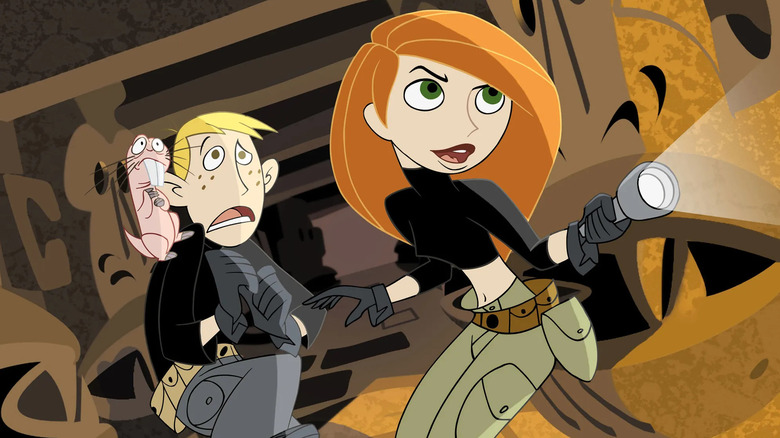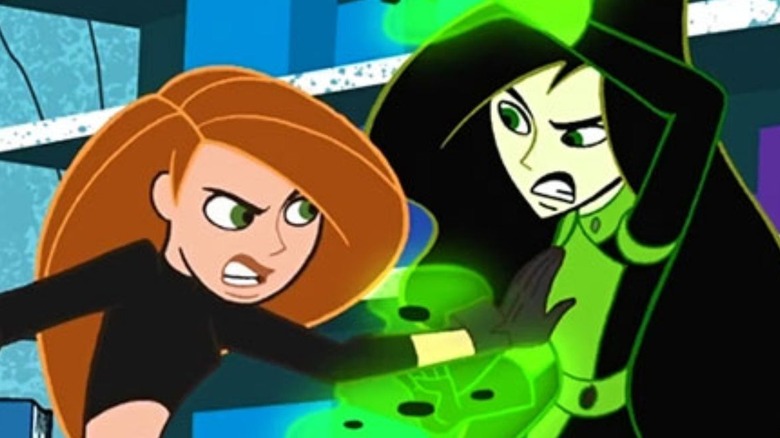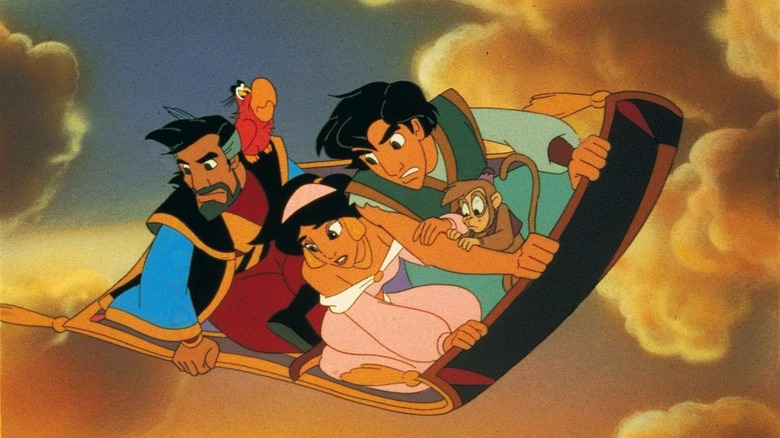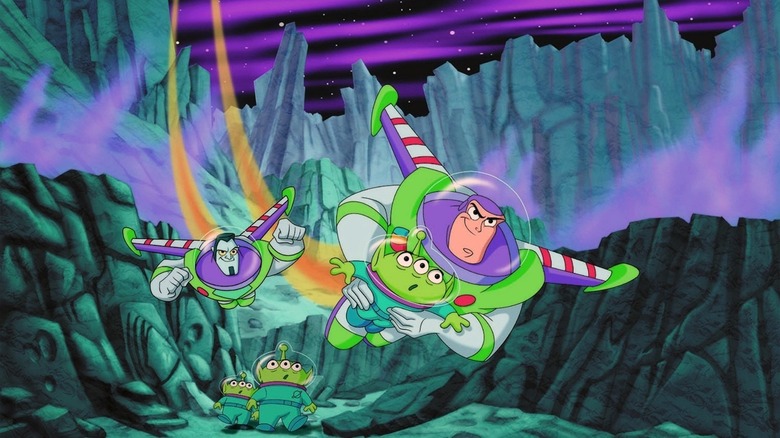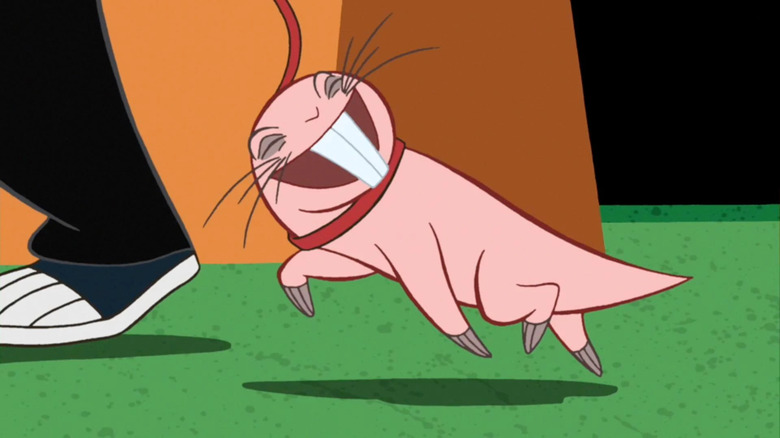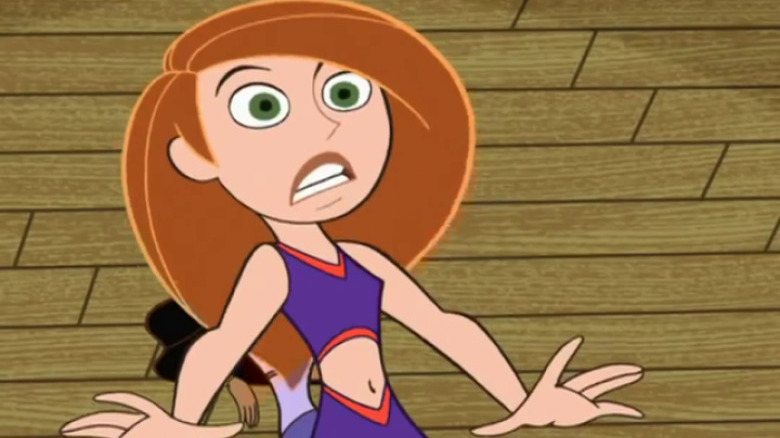Kim Possible Co-Creator On Studio Notes And An Early Plan For Buzz Lightyear Of Star Command [Interview]
(Welcome to My Most Ridiculous Note, a series of interviews in which animators talk about the weirdest and funniest notes they received from studio executives.)
"Kim Possible" was only the second animated series made for Disney Channel (after "The Proud Family"), and it quickly became one of the cable channel's most popular shows. It's easy to see why: It had action, it had comedy, and it had one of the coolest Disney pets ever.
One of the minds behind the show, co-creator Mark McCorkle, has been in the industry long enough to see it go from being dominated by toy commercials to exploding with original (and not-so-original) ideas and genres. He's worked on everything from "The Super Mario Bros. Super Show!" and Hasbro's "COPS" to "Aladdin and the King of Thieves" and "Buzz Lightyear of Star Command."
/Film talked to McCorkle about "Kim Possible," which turned 20 earlier this year, as well as what it's like to turn beloved Disney movies into TV shows. He also tells the story of how a studio note led to a naked mole rat becoming a cartoon icon.
Call me, beep me if you wanna reach me
When it came out, "Kim Possible" felt like a breath of fresh air not just for Disney, but in animation. The show follows a teenage girl named Kim, who spends her days trying to survive high school while doubling as a secret crime-fighting agent on the side.
The mix of action and adventure with a typical sitcom format felt different than other female-led cartoons of the time. This was not "As Told by Ginger," or "Daria," though it still dealt with teenage problems and stories. It also wasn't "Codename: Kids Next Door" or "Jackie Chan Adventures," though it featured stories just as action-filled.
"Knowing that our audience was primarily female, that's why we wanted to do an action heroine," McCorkle told us. "We grew up with these male heroes that we could watch — James Bond and James Kirk and all. We thought, 'Let's give our daughters that.'"
According to McCorkle, they didn't want Kim to be static like Bond, they wanted her to change and to be more than just her job.
"So then that's when we had the idea of [it being] a show about [how] 'saving the world is easy, high school is hard.' As soon as we had that tagline figured out, we had a thematic thing to hang it all on."
This balance became the key to "Kim Possible." According to McCorkle, producer Chris Bailey aimed to make the action scenes feel like features, while McCorkle and co-creator Bob Schooley wanted the school and family side of each episode to feel like a proper sitcom.
They also aimed to have each episode spend the same amount of time with each of the two elements. Kim would go on cool missions and fight villains like Dr. Drakken and Shego one moment, then struggle with a bully at school the next. "It's tempting to just do the fun action stuff and short-change the other stuff," McCorkle said. "We want it to be 50/50 so that both things are getting their due."
A whole new world
Years before "Kim Possible" made it to air, McCorkle was working in shows like "The Super Mario Bros. Super Show!" and "The Real Ghostbusters."
"Something like 'Super Mario Bros,' it wasn't exactly a big-budget show," McCorkle remembers. "It was fun. It was fun to write. We loved writing those characters, but those were good years for learning. In the world of TV animation, there were sort of two big realms. There was Saturday morning realm, where the budgets were bigger, and there were the networks."
In the '90s, McCorkle started working for Disney Television Animation, where he made a career out of adapting your favorite Disney movies into TV shows, including "Aladdin," "Hercules," and "Toy Story." The "Aladdin" TV show started with the pilot-turned-into-a-feature "Return of Jafar," but ended with a feature finale that I once called the best of Disney's many direct-to-video sequels. "Aladdin and The King of Thieves" was a proper feature with some great action sequences, catchy songs, and the hottest Disney dad.
"I think ['King of Thieves'] was conceived more as 'Let's tell a movie story,'" McCorkle recalled, comparing some of the other movies, like "Return of Jafar," to a five-part or four-part TV pilot. "It was conceived as a musical from the beginning, too, which is another element that changes the vibe."
To infinity and beyond
When it came to actual TV spin-offs, however, you could easily argue that the best one came not from a Disney movie, but a Pixar one. "Buzz Lightyear of Star Command" was a spin-off of "Toy Story" presenting the in-universe show Buzz came from — before the new movie messed up the whole continuity and premise.
The cartoon followed the titular Buzz and a team of rookies he trains to fight the forces of Evil Emperor Zurg. It had an old-school space opera feel to it, some great locations and creature designs, and good action scenes for a show aimed at kids. There were recurring villains, several continuous plot threads, and it always felt as if the universe was expanding in interesting ways. It felt like it came out of Andy's imagination when playing with Buzz, like the kind of adventures you wish your toys had.
Each episode starts with a 3D CG opening sequence featuring the "Toy Story" characters sitting around a TV to watch the episode. At one point early in development, however, the show was meant to be much more of a "Toy Story" show. "There would be CG wraparounds with some shtick with the toys in the room and then the Buzz segment would be shorter," McCorkle explained. "It would be more like that clip that they had done, where it's broad and a bit over the top." But with CG not being very cheap, plans changed and the Buzz segments became the whole show. "Some of it was parody and then some of it was just, 'Here's some good science fiction ideas, and let's just have fun with it.'"
A Kim Possible note that actually worked
"Kim Possible" quickly became a hit and remained popular, but the show was not impervious to studio interference and notes. Indeed, one of the most famous elements of the cartoon came from a studio request.
"One of the only notes we got early one was, 'Can you add a pet?'" McCorkle explained, saying that, while he and Schooley were fine with the note, some of the writers were dismissive. "That's like note 101 that you get." Still, the challenge led to some unique results:
"We thought we should really come up with the most unique pet you could possibly add. What could it be? And Bob was on a trip back east with his family and they were at the Philadelphia zoo at the naked mole rat exhibit, and he said the kids were just transfixed watching these little, ugly, gross, but somehow still cute creatures. And he said, 'It's got to be a naked mole rat.' And that's when he came up with Rufus. And even then, we came up with Rufus, but we had no explanation as to why until much, much later in the series. We came up with that Ron's dad was allergic to fur, so he needed something hairless."
In an instance of a studio note leading to something good, Rufus the naked mole rat grew to be one of the most popular characters in the show, and one of the most bizarre Disney pets ever.
Unhelpful notes
Of course, there are instances where notes aren't nearly as helpful. Though he wouldn't specify the project or studio, McCorkle also told us about a different time when they had a screening of an animatic for a project. After the screening, executives took turns giving notes one at a time.
"One person said, 'I have a problem with the pacing, the timing.' We're like, 'Oh.' 'It all goes too fast. I couldn't follow it.' We're like, 'Okay, we'll write that down.' All right. And the next person goes, 'You know what? I had a very similar problem.' And we're like, 'Oh, really?' 'Yeah, the pacing. I thought it was way too slow.'"
"And we kind of looked at each other," McCorkle recalled, referencing his creative partner, Bob Schooley. "We've been partners a long time, so we didn't have to speak. We looked at each other and said mentally in complete silence ... 'Those are not at all related. Those are not at all similar. Those are two completely opposite notes that you folks just gave with a straight face.'"
